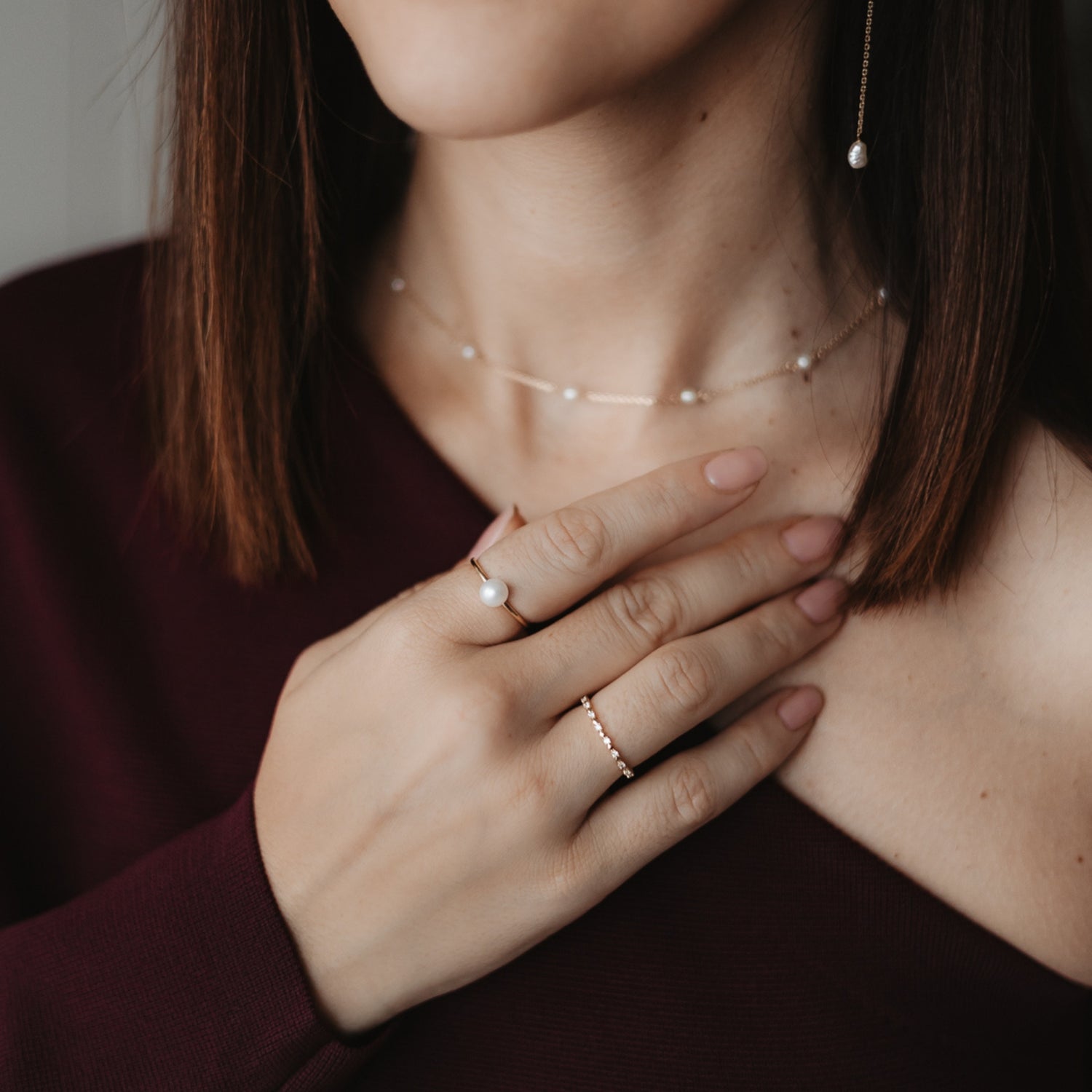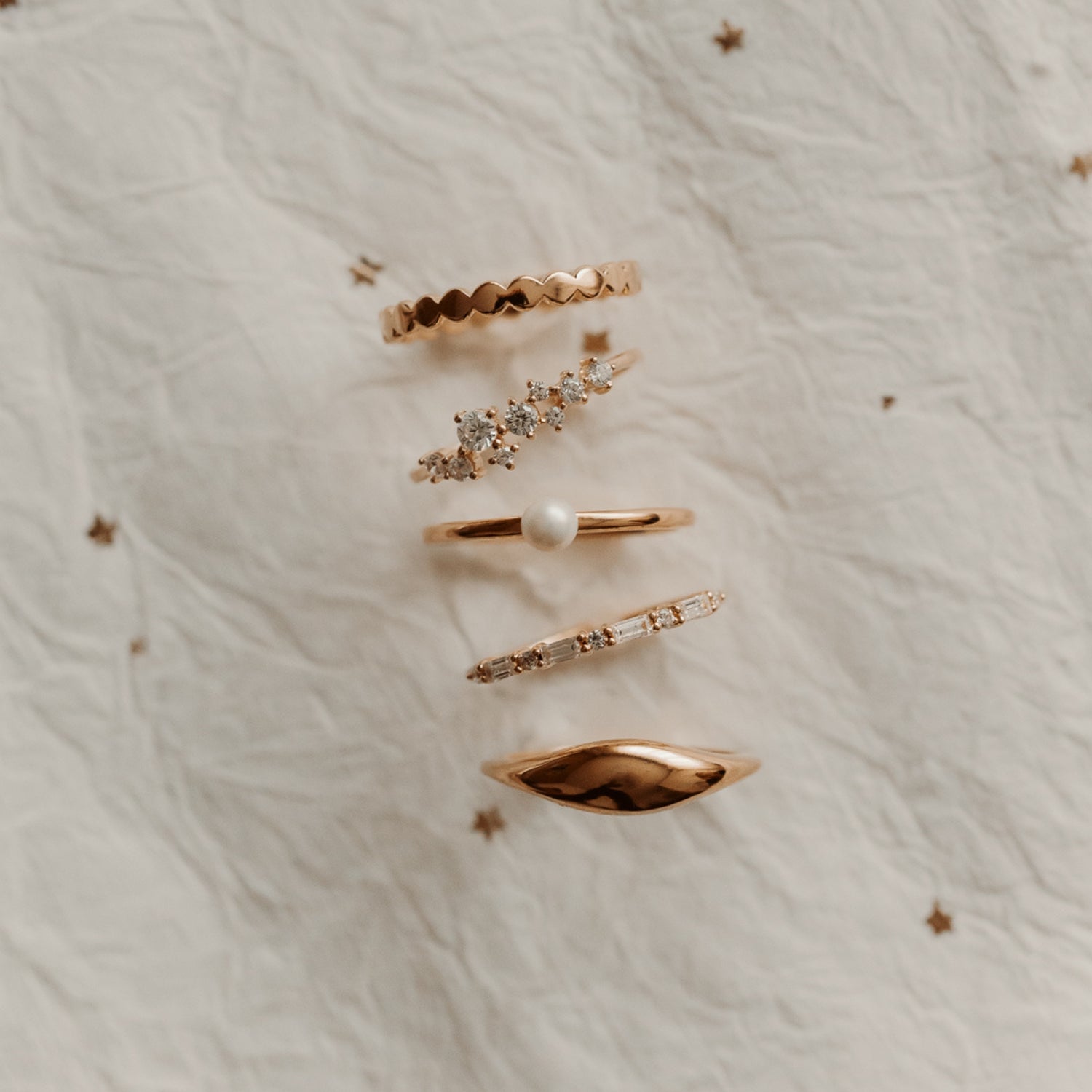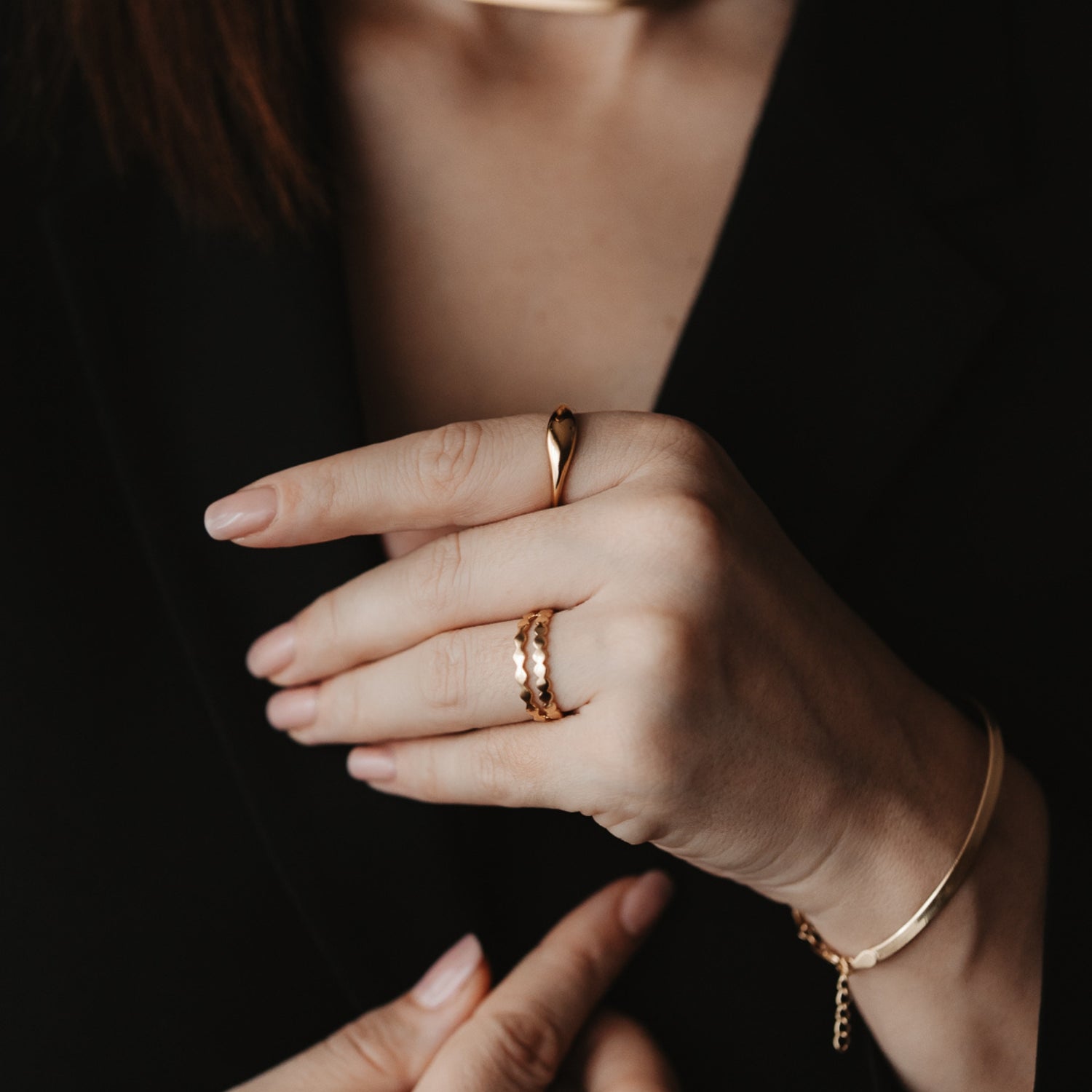
Care Guide
When it comes to our beloved accessories, perhaps the most common problem is the oxidation of precious metal jewelry. There are countless external factors that cause this reaction, sooner or later, depending on how much they have been exposed to them.
Often, no matter how carefully we follow the instructions in the care guide, we end up having the unpleasant surprise of seeing that the oxidation of our jewelry has caught us off guard.
Fortunately, we can always be one step ahead of the enemy. But before we can take action against him, we need to know who he really is.

About the composition of your jewelry
It is a well-known fact that noble metals, such as gold and silver, deserve their name because they are not subject to the chemical reaction of oxidation . However, this is only true for metals in their pure state. At the same time, on their own, these metals are far too malleable to withstand everyday use.
We all want our jewelry to stand the test of time. For this reason, it has become almost mandatory practice for the metal from which the jewelry is made to be an alloy . Mixing it with another precious metal gives many more advantages. The strength , durability and unique color could not be obtained otherwise. Contrary to popular opinion, the alloy does not diminish the value of the jewelry, in fact, on the contrary.
Copper, brass, and sterling silver are examples of metals used to create alloys. For example, the famous rose gold invented by master Fabergé is nothing more than an alloy of gold and copper.
These metals are what actually make it possible for our jewelry to oxidize.

When oxidation occurs
It's hard to pinpoint just one factor that caused your jewelry to oxidize. Pollution , humidity , cosmetics , even your body's pH can all play a key role when it comes to jewelry oxidation.
Even exposure to essentially harmless substances can initiate the oxidation process. Dishwashing detergent , lemon juice, our cosmetics , and even our favorite perfume can be the culprits in the shadows.
If we want to narrow the circle of culprits as much as possible, the most effective way to do that is by creating a more jewelry-friendly routine.
Going to the gym is great, and even if we want to look good, it would be best to leave all the accessories at home. In addition to the fact that the risk of deformation is high due to physical exertion, sweating is another factor that contributes to oxidation.
How to care for gold jewelry
- Although we know you love them and never want to part with them, try to leave your jewelry aside when you wash or shower!
- Housework is mandatory for us, but not for our rings. Try not to wash the dishes while wearing them.
- Skincare and makeup work wonders for your skin, but not for your metals. Choosing jewelry should be the last step in your beauty routine!

Rose gold does not escape the oxidation process
Much like regular gold, rose gold can also undergo changes. The copper in the alloy, which also gives it its unique color, increases the susceptibility of jewelry to oxidation. Fortunately, the process can be reversed very easily, following our advice.
Once again, a soft brush, mild soap, and lukewarm water can be your jewelry's best friend. This method is harmless to rose gold. You can also invest in a special rose gold cleaner. Don't forget to read the product label carefully! You need to make sure that what you buy is specifically designed for rose gold, and that it is also compatible with the gemstones in your jewelry, if any.
Because good care beats bad danger, it's a good idea to incorporate a few care steps into your routine to avoid your jewelry from oxidizing.
For shiny jewelry, you can gently wipe it with a microfiber cloth or cotton wool after each wear. This will help prevent dust, hand cream, or exposure to body fluids. You can also try to keep the environment where you store your jewelry as dry as possible.
How to prevent jewelry from oxidizing
A simple way to keep your jewelry looking like new is to wear it often! The friction during wear gradually removes the black layer.
If your jewelry needs more attention, you can opt for cleaning it with a special silver cleaning cloth. Patience and perseverance will work wonders.
It's best to avoid cleaning silver with chemicals or other questionable 'remedies'. Toothpaste, lemon, and detergents may seem like the most obvious solution. Unfortunately, there's a good chance that the 'treatment' will cause irreparable damage to the metal. These liquids are far too strong for silver, affecting it little by little each time.
Oxidation of your beloved jewelry can be prevented with a little care. Whether it's gold, rose gold, or silver, it's in your power to keep it looking like new for as long as possible.


